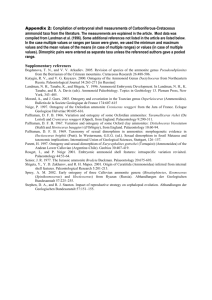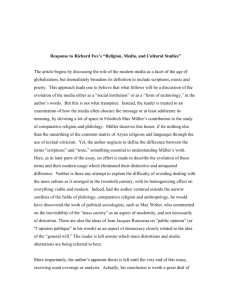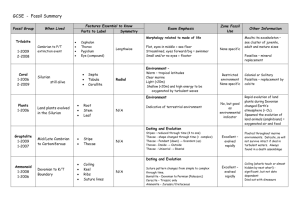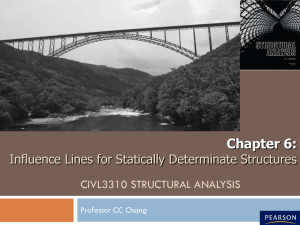Report 2007 of the Russian National Group on the IGCP Project 555
advertisement
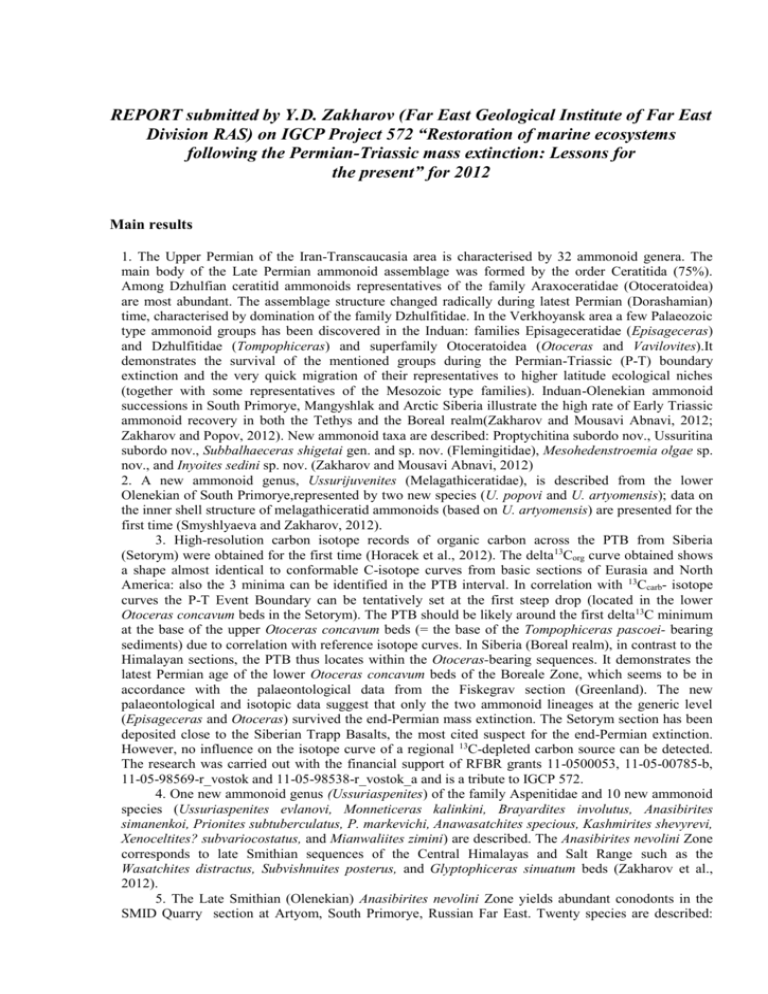
REPORT submitted by Y.D. Zakharov (Far East Geological Institute of Far East Division RAS) on IGCP Project 572 “Restoration of marine ecosystems following the Permian-Triassic mass extinction: Lessons for the present” for 2012 Main results 1. The Upper Permian of the Iran-Transcaucasia area is characterised by 32 ammonoid genera. The main body of the Late Permian ammonoid assemblage was formed by the order Ceratitida (75%). Among Dzhulfian ceratitid ammonoids representatives of the family Araxoceratidae (Otoceratoidea) are most abundant. The assemblage structure changed radically during latest Permian (Dorashamian) time, characterised by domination of the family Dzhulfitidae. In the Verkhoyansk area a few Palaeozoic type ammonoid groups has been discovered in the Induan: families Episageceratidae (Episageceras) and Dzhulfitidae (Tompophiceras) and superfamily Otoceratoidea (Otoceras and Vavilovites).It demonstrates the survival of the mentioned groups during the Permian-Triassic (P-T) boundary extinction and the very quick migration of their representatives to higher latitude ecological niches (together with some representatives of the Mesozoic type families). Induan-Olenekian ammonoid successions in South Primorye, Mangyshlak and Arctic Siberia illustrate the high rate of Early Triassic ammonoid recovery in both the Tethys and the Boreal realm(Zakharov and Mousavi Abnavi, 2012; Zakharov and Popov, 2012). New ammonoid taxa are described: Proptychitina subordo nov., Ussuritina subordo nov., Subbalhaeceras shigetai gen. and sp. nov. (Flemingitidae), Mesohedenstroemia olgae sp. nov., and Inyoites sedini sp. nov. (Zakharov and Mousavi Abnavi, 2012) 2. A new ammonoid genus, Ussurijuvenites (Melagathiceratidae), is described from the lower Olenekian of South Primorye,represented by two new species (U. popovi and U. artyomensis); data on the inner shell structure of melagathiceratid ammonoids (based on U. artyomensis) are presented for the first time (Smyshlyaeva and Zakharov, 2012). 3. High-resolution carbon isotope records of organic carbon across the PTB from Siberia (Setorym) were obtained for the first time (Horacek et al., 2012). The delta 13Corg curve obtained shows a shape almost identical to conformable C-isotope curves from basic sections of Eurasia and North America: also the 3 minima can be identified in the PTB interval. In correlation with 13Ccarb- isotope curves the P-T Event Boundary can be tentatively set at the first steep drop (located in the lower Otoceras concavum beds in the Setorym). The PTB should be likely around the first delta13C minimum at the base of the upper Otoceras concavum beds (= the base of the Tompophiceras pascoei- bearing sediments) due to correlation with reference isotope curves. In Siberia (Boreal realm), in contrast to the Himalayan sections, the PTB thus locates within the Otoceras-bearing sequences. It demonstrates the latest Permian age of the lower Otoceras concavum beds of the Boreale Zone, which seems to be in accordance with the palaeontological data from the Fiskegrav section (Greenland). The new palaeontological and isotopic data suggest that only the two ammonoid lineages at the generic level (Episageceras and Otoceras) survived the end-Permian mass extinction. The Setorym section has been deposited close to the Siberian Trapp Basalts, the most cited suspect for the end-Permian extinction. However, no influence on the isotope curve of a regional 13C-depleted carbon source can be detected. The research was carried out with the financial support of RFBR grants 11-0500053, 11-05-00785-b, 11-05-98569-r_vostok and 11-05-98538-r_vostok_a and is a tribute to IGCP 572. 4. One new ammonoid genus (Ussuriaspenites) of the family Aspenitidae and 10 new ammonoid species (Ussuriaspenites evlanovi, Monneticeras kalinkini, Brayardites involutus, Anasibirites simanenkoi, Prionites subtuberculatus, P. markevichi, Anawasatchites specious, Kashmirites shevyrevi, Xenoceltites? subvariocostatus, and Mianwaliites zimini) are described. The Anasibirites nevolini Zone corresponds to late Smithian sequences of the Central Himalayas and Salt Range such as the Wasatchites distractus, Subvishnuites posterus, and Glyptophiceras sinuatum beds (Zakharov et al., 2012). 5. The Late Smithian (Olenekian) Anasibirites nevolini Zone yields abundant conodonts in the SMID Quarry section at Artyom, South Primorye, Russian Far East. Twenty species are described: Discritella dicreta (Müller), Ellisonia nevadensis Müller, Ellisonia triassica Müller, Furnishius triserratus Clark, Hadrodontina sp., Neospathodus ex gr. waageni Sweet, N. novaehollandiae McTavish, Scythogondolella milleri (Müller), S. mosheri (Kozur & Mostler) and S. sp., including Neogondolellid elements. The Olenekian (late Smithian) Scythogondolella milleri Zone represents the 18 m thick lower member A of the Anasibirites nevolini Zone. Member A yields at its base: Neospathodus ex gr waageni Sweet, Ellisonia nevadensis Müller, E. triassica Müller, Furnishius triserratus Clark, Scythogondolella milleri (Müller) and S. mosheri (Kozur & Mostler), with S. milleri (Müller) occurring also at top and Neogondolellid P2, S3-4/S0 Group B elements. Furnishius triserratus Clark, and Ellisonia triassica Müller further occur at the top of the 10 m thick member B, “Hindeodella” Group B Beds with Neospathodus novaehollandiae McTavish, Discretella discreta (Müller), Hadrodontina sp., and Neogondolellid S3-4/S0 Group A, B elements (Bondarenko et al., 2012). References 1. Bondarenko, L.B., Buryi, G.I., Zakharo, Y.D., Bushkare, X.Y., and Popov, A.M., in press. Late Smithian (Early Triassic) conodonts from Artyom, South Primorye, Russian Far East. New Mexico Museum of Natural History & Science, Bulletin. 2. Horachek, M., Biakov, A.S., Richoz, S., and Zakharov, Y.D., 2012. The PermianTriassic –Boundary (PTB) succession at the Setorym River section, Siberia/Russia: investigation of the organic 13C-isotope evolution. Proceedings of the 34th International Geological Congress 2012. ISBN 978-0-646-57800-2 (5-10 August 2012. Brisbane, Australia), p. 1516. 3. Smyshlyaeva, O.P., Zakharov, Y.D., 2012. New representatives of the family Melagathiceratidae (Ammonoidea) from the Lower Triassic of South Primorye. Paleontol. Zhurnal, no. 2: 34-39 (in Russian). 4. Zakharov, Y.D., Mousavi Abnavi, N., 2012 (in press). The ammonoid recovery after the end-Permian mass extinction: evidence from the Iran-Transcaucasia area, Siberia, Primorye, and Kazakhstan. Acta Palaeontologica Polonica 57 (4). 5. Zakharov Y.D., Bondarenko L.B., Smyshlyaeva O.P., and Popov A.M., in press. Late Smithian (Early Triassic) ammonoids from the Anasibirites nevolini Zone of South Primorye, Russian Far East. New Mexico Museum of Natural History & Science, Bulletin 6. Zakharov, Y.D., Popov, A.M., 2012 (in press). Recovery of brachiopod and ammonoid faunas following the end-Permian crisis: additional evidence from the Lower Triassic of the Russian Far East and Kazakhstan. Journal of Earth Science Main meetings 34th International Geological Congress 2012 (5-10 August 2012. Brisbane, Australia).
